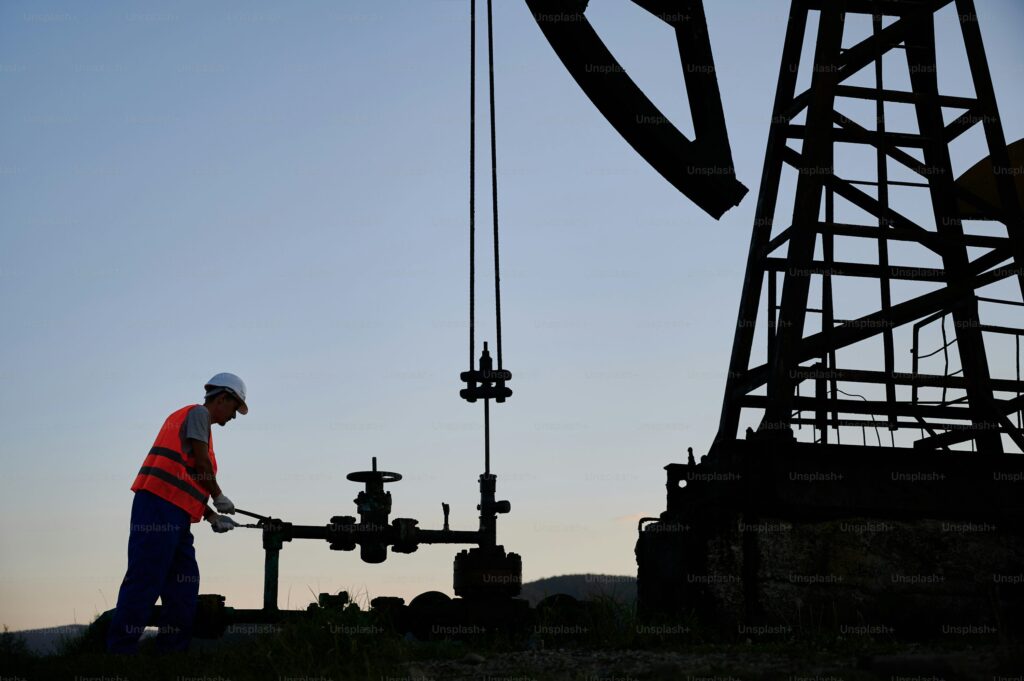American Energy for Grownups transcript
John Robson:
Isn’t it adorable when little children tell us how global energy systems should be run?
Well, maybe it was cute for a while, back when everything was running smoothly, to see world leaders put a girl with pigtails up on stage to lecture us all about how we need to stop using fossil fuels and switch to magic beans or flying unicorns or something along those lines.
But how things change.
Narrator:
Now that fossil fuel supplies are getting dangerously scarce, and heating our homes, and getting around, and buying food are becoming painfully expensive, we’re faced with a stark reminder that energy systems are not playthings.
John Robson:
It’s time to send the children off to their rooms to do their homework, and for the rest of us to have an adult conversation about what a modern energy system really looks like.
For the Climate Discussion Nexus, I’m John Robson, and this is a CDN Primer on Energy in the U.S. Economy.
Narrator:
Before we look at the U.S., let’s get a picture of what world oil consumption has been like for the past 6 decades. The picture is pretty simple.
From 1965 to the present, world oil consumption more than tripled. You can see that recessions sometimes cause demand to slow down, like those in the early 1980s or after the 2008 financial crisis, but otherwise, the trend is steadily upward. Even the massive global economic shutdowns for COVID in 2020 only sent oil consumption back to where it was in 2011, and it’s been recovering rapidly since.
In the United States, oil consumption grew steadily from the 1980s up to 2005, but hasn’t risen since. Meanwhile, domestic production did the opposite. It fell from 1980 to 2005, then started growing rapidly as the fracking industry took off. In 2019 U.S. oil production was more than two and a half times larger than in 2006.
So with all that oil being produced, why are U.S. gasoline prices so high? Well, you’ll notice that while consumption began growing after the end of the COVID lockdowns, oil production hasn’t followed suit. With demand rising around the world, the lack of extra production in the U.S. means supply can’t keep up with what U.S. drivers currently need.
John Robson:
This painful situation was a predictable result of the Biden Administration’s different priorities, namely phasing out fossil fuels as a way of fighting climate change.
Couple that domestic policy with Biden’s decision to cancel the Keystone XL pipeline to bring in oil from Canada, and the inability or unwillingness of producers in other countries like Saudi Arabia or Russia to make up the difference, and you have a predictable gap between demand and supply.
The result, and again it’s very predictable has been a steep ramp in gasoline prices beginning in…well, November 2020.
Yes, Putin’s invasion of Ukraine in late February 2022 added upward pressure to gasoline prices. But that pressure came after they’d already risen nearly three-fold since November of 2020. So Russia’s invasion of Ukraine wasn’t the cause of most of what we’ve been going through. Most of it instead is a self-inflicted wound.
And now, a word from our sponsor, and that’s you. And we are so grateful to all the people who have contributed, including now, if you “buy me a coffee”. It’s helping us get the message out on Substack, on Rumble, and here on YouTube, where in fact we’ve added more than five thousand subscribers in the last month alone. And so, I’ve put on my best flannel shirt to say to the rest of you politely and gently, fork over the cash, pronto. We thank you for your kind consideration, and now back to the program.
Narrator:
To understand why gasoline prices have gone up so much since 2020, here’s another important statistic. In the year 2000, there were 158 refineries operating in the U.S., turning oil into gasoline for use in motor vehicles. Today there are only 129, almost a 20 percent drop.
The ones that remain in operation have been able to increase capacity somewhat. But only enough to match the total capacity of the industry back in 1980, when American domestic consumption was only three-quarters of what it is now.
The surprising truth is that no one has built a new refinery with significant gasoline production capacity in the United States since 1977. And industry insiders say that while they plan to increase capacity at existing refineries if they can, they don’t expect any new refineries to be built in the U.S. ever again, because of onerous environmental regulations.
Environmental and climate regulations make it impossible for industries to get investor backing for multi-billion dollar energy projects that take years to plan and implement, and may in the end never get the required government approvals.
That’s why, as gasoline demand ramped up following the COVID lockdowns, with oil production frozen at pre-2020 levels and refining capacity no higher than it was in 2011, prices went through the roof.
John Robson:
So you get the picture. You can’t blame soaring gas prices on Vladimir Putin unless you think all our environmental regulators and climate alarmists are working for him. And frankly, if they were, it’s not obvious what they would have done differently from what they actually did, because the United States is short of gasoline on purpose.
This crisis is neither an accident nor a plot. It’s a plan executed with great determination over many years and it’s “working” if scarce and costly petroleum-based energy appeals to you as it does to Green Transition enthusiasts.
But of course, there are other important forms of energy in the American economy, so let’s look at those: natural gas and electricity.
Narrator:
The United States consumes over 80 billion cubic feet of natural gas per day, double what it did back in the mid-1980s.
But American natural gas output has risen dramatically too, from 50 billion cubic feet per day in 2000 to over 90 billion cubic feet per day in 2021, making the U.S. far and away the largest natural gas producer in the world. Russia is a distant second at 68 billion cubic feet per day, followed by Iran at 25 billion, and China at 20 billion.
Natural gas or methane is classified as a “Greenhouse gas”, of course. But all that extra production allowed the U.S. to reduce its coal consumption from over a billion short tons in 2000 to about 550 million short tons in 2021. 41 percent of it comes from Wyoming, by the way, followed by West Virginia at 13 percent, and Pennsylvania and Illinois together producing another 13 percent. And most alarmists would far rather people burned methane than coal.
John Robson:
Now let’s look at where U.S. electricity comes from. Especially as it’s the topic that inspires the most magical thinking of all, as people fantasize that the American industrial economy could be entirely powered by solar panels and windmills cranking out current as needed.
Narrator:
Back in the year 2001, the U.S. electrical grid got 51 percent of its power from coal and 17 percent from natural gas, for a combined total of 68 percent, while 21 percent came from nuclear, and the rest, about 11 percent, from so-called renewables. But remember, those are primarily hydroelectric dams, along with some wind, biofuels, and a few other very minor ones.
More than twenty years later, in 2021, after two decades of pushing renewables as part of a so-called energy transition, the U.S. got 22 percent of its electricity from coal and 38 percent from natural gas for a combined total of 60 percent, while 19 percent came from nuclear and the remaining 20 percent or so came from renewables. In which category wind had overtaken hydro to reach 9 percent, with hydro at 6, solar at 4, and the others minimal.
John Robson:
So after 20 years, it’s not a huge change in the role of windmills and solar panels, especially considering how much money got thrown at them. Meanwhile, places in the U.S. that rely heavily on wind and solar are starting to have to worry about the reliability of their electricity grids because a major issue with both is that the wind bloweth where it listeth, as the sun shineth, and they don’t rev up or ease back on demand.
California, for example, has invested heavily in windmills and solar panels and even shut down both nuclear and gas-powered generating stations as part of its transition. But demand for electricity often spikes in hot weather, when people turn up their air conditioners just as the wind is dying down, and demand also rises up in evening just as the sun sets. So you can guess what this timing leads to.
Narrator:
There’s a lot more that could be said. But this summary should give you an idea of the main ways the U.S. produces and uses energy. Oil, natural gas, and coal play big roles in keeping the lights and the furnace and oven on, the factories running and the cars moving. U.S. and world energy demand continues to grow, and there’s no magic wand you can wave to shut it all down, so you can’t expect to get rid of fossil fuels without causing a massive global economic and social crisis.
John Robson:
Nor do you have to. One of our recurring themes here at the Climate Discussion Nexus is that the supposed downside of fossil fuel use, namely its effect on climate change, has been grossly exaggerated. There’s plenty of evidence that climate trends are small and any contribution to them from the use of fossil fuels is vastly outweighed by the benefits they bring us in the form of inexpensive and reliable energy.
That means people able to eat and heat their homes. Real consequences for real people. It’s a formula so simple, even a child could understand it. So, someone get me a child, quick… but not you-know-who.
For the Climate Discussion Nexus, I’m John Robson, and I’m Greta-ed out.



John please keep up the good work.
A voice of sanity in a mad world. Keep up the good work, many of us rely on you for information and amusement.
The bottom line is that all of this pressure to phase out fossil fuels is based on the ridiculously overstated heating effects from a component of the atmosphere that’s only a little over 0.04% of the total atmosphere. I think this is all being done on purpose by the WEF and their governmental plants because they know that the only way the people of this world will acquiesce to their new world order and great reset is if there is a big enough crisis for them to cry out to governments for help. Climate change does represent a huge existential threat to humanity, but not for the reason most people think. The “fix” for this non existent problem will create the worst energy, economic, and food crisis the world has ever seen and this is exactly the plan of the unelected terrorist cabal elites hiding behind the cleverly crafted benign name of the World Economic Forum.
The whole aim of practical politics is to keep the populace alarmed, (and hence clamorous to be led to safety), by menacing it with an endless series of hobgoblins, all of them imaginary.
One that you didn't mention is that wind the wind blows and they are producing energy the dams by law are not allowed to produce energy and have to dump the water behind the dams. In which case I believe dams can produce way more electricity and on a percentage basis the wind turbines are artificially higher that it appears.
If we insist on a goal or reducing or eliminating fossil fuels, the sane approach is to harness market forces to provide the energy (pun intended) for change. That means supply of an alternative source, at competitive pricing. Creating a scarcity, as is currently being done, is to do so counter to market forces. If we choose to work *against* the market, we need to be preparedto be crushed. Canada tried to counter market forces to move its currency exchange in the 1980s. And quit that idea in a hurry.
Thanks for this, sometimes I think it's me but it's not, it's them. We are given so much information which disproves the claims of these dark characters and yet it seems the world insists on believing them.
So, today, apparently, the world will transport and use 100 Million barrels of oil. For what? might I ask?
Half of that I have been told is for fuels. Which are used in Infernal Combustion Engines by high temperature oxidation to do Work at about 40% effectiveness. More than half is blown out the exhaust pipe as heat.
So, my question is this. Where is all that heat going? A minimum of 25 million barrels of oil daily?
Much more a source of global warming than CO2, possibly.
Are we selling our excess wind energy in Ontario to New York State and Michigan at a loss? Has anyone ever calculated the approximate financial loss over a 20 year contract?
Bob, don't forget the 6000 products made from oil.
https://www.linkedin.com/pulse/partial-list-over-6000-products-made-from-one-barrel-oil-steve-pryor/
For John to keep up the good work, he needs our support. Send him some dough.